Alaïa Fall–Spring 2026 Collection
Pieter Mulier’s latest for Alaïa was an electric study in restraint and sensuality — a meditation on form, movement, and emotion. With just a few elemental shapes and a palette of raw materials, he managed to summon an immense sense of beauty, the kind that feels both sculptural and alive.
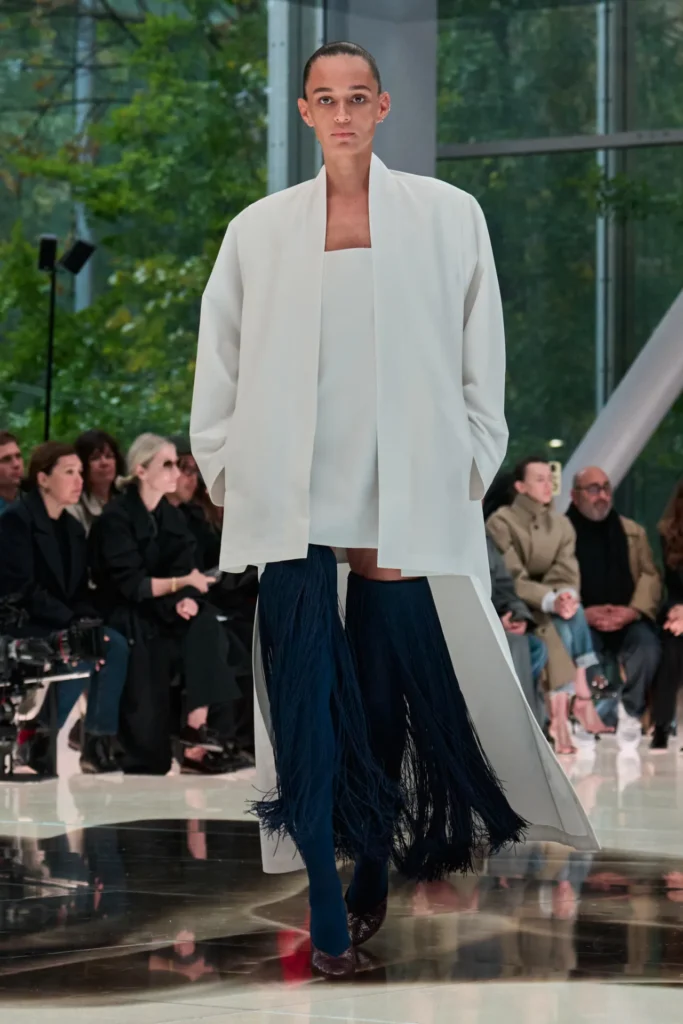
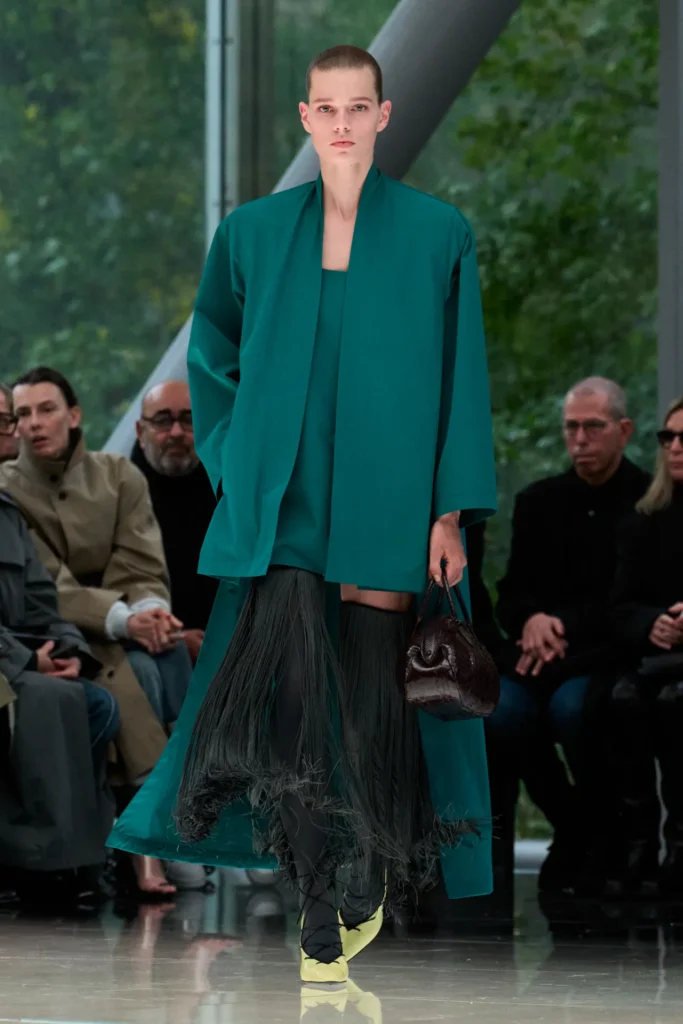
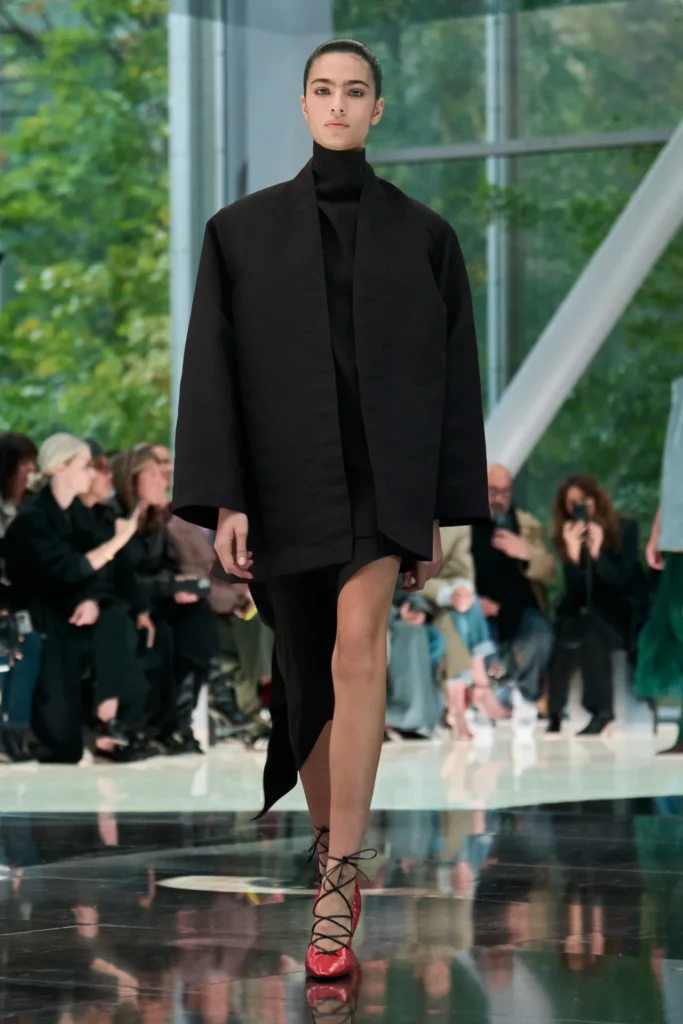
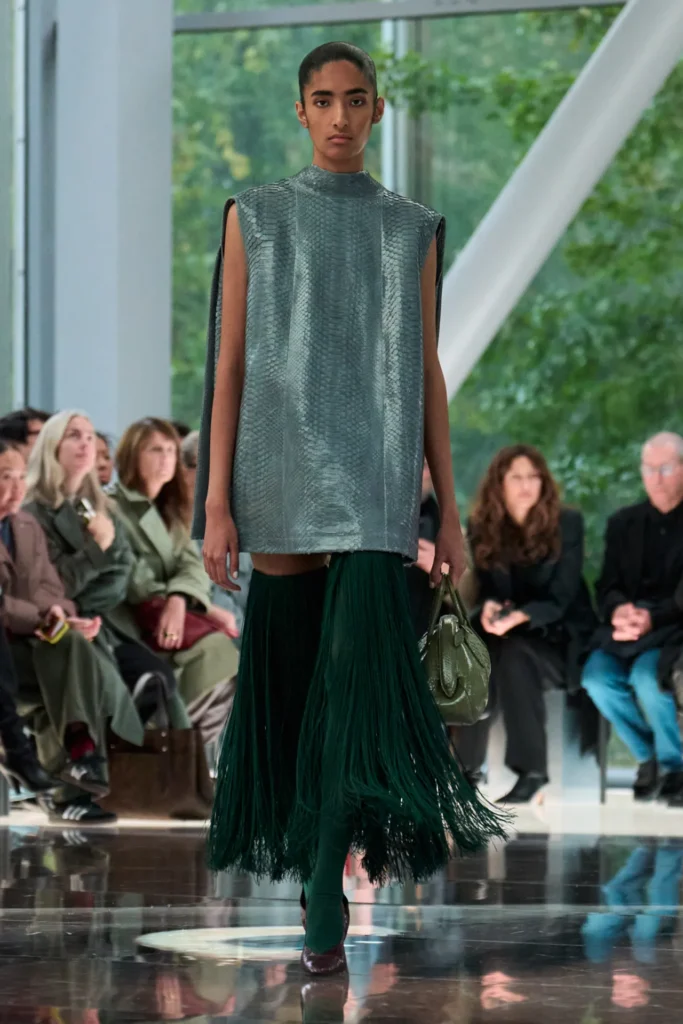
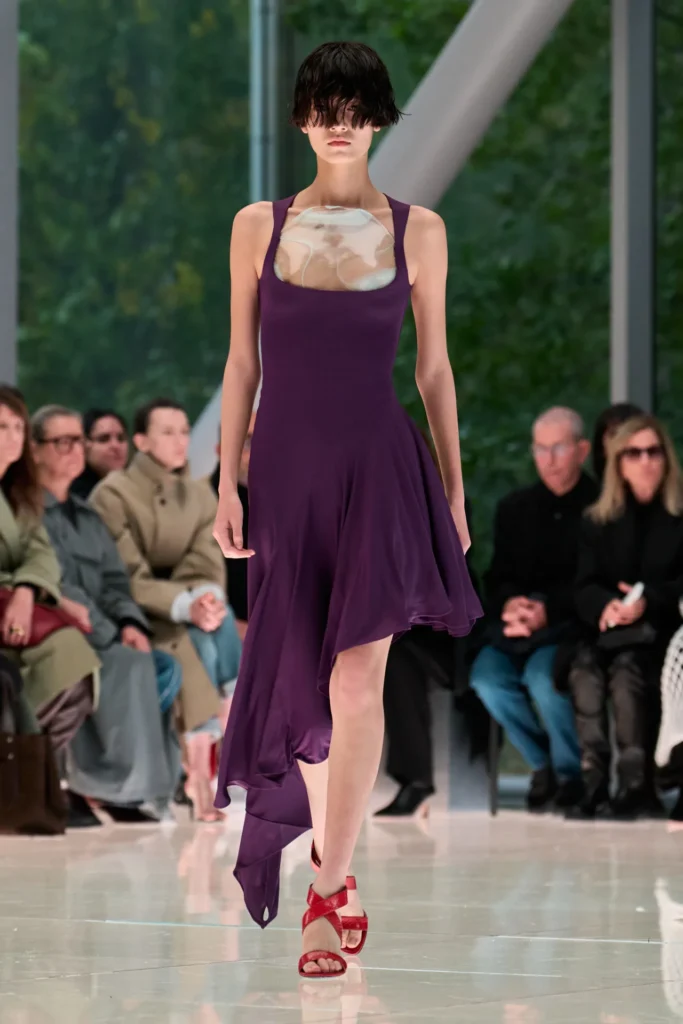
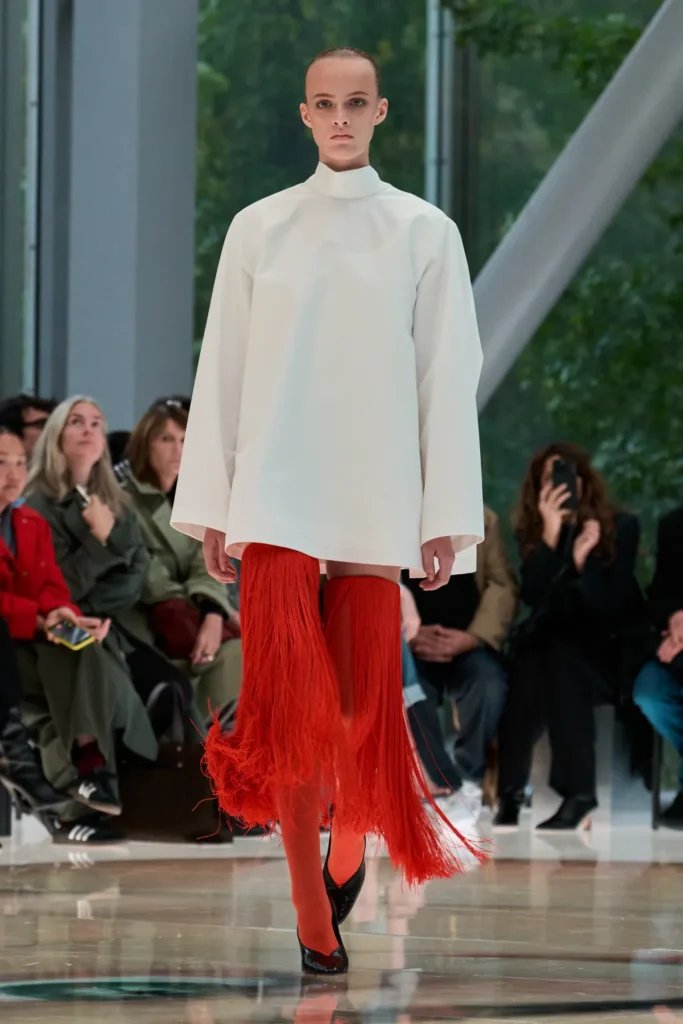
“I wanted to put women and beauty at the center,” Mulier said after the show, his words echoing through the minimal, echoing space. “And I wanted clothes that could cry.” That poetic impulse ran through the entire collection: cascading fringes suspended from sheer, high-waisted stockings; austere cotton tunics zipped at the back; and scarf-knit skirts cut on the bias, some forming triangles of dense silk, others unraveling into feathery, asymmetrical cascades.
Mulier’s experimental streak, one of Paris’s most distinct, remains intact. The latex-like facial tubes of last season evolved into sleek, body-hugging jumpsuits and two-piece dresses — garments that wrapped around the body like skin itself. Stockings pulled up over shoulders and hips, cloaks looped delicately around pinky fingers, and skirt stirrups hooked to the heels created a sense of tension and release — intimacy turned architecture.
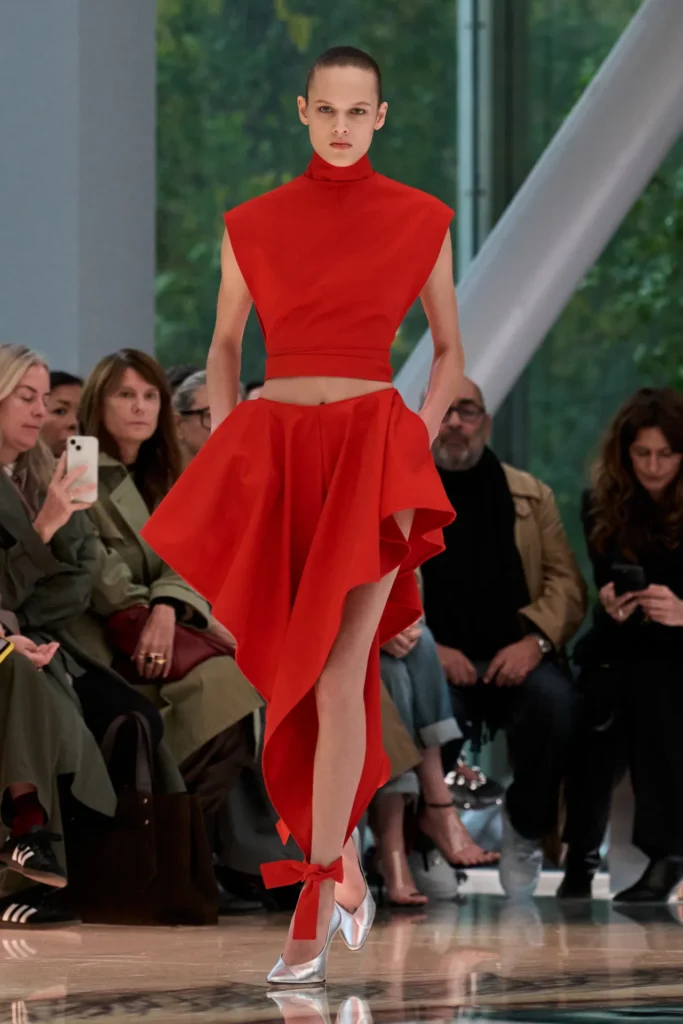
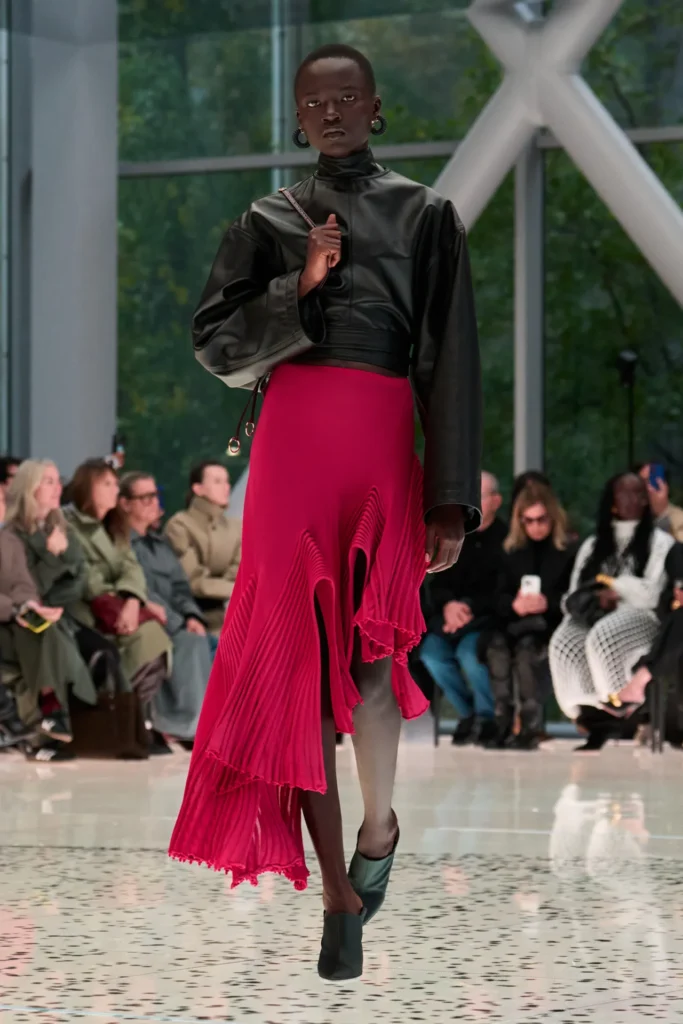
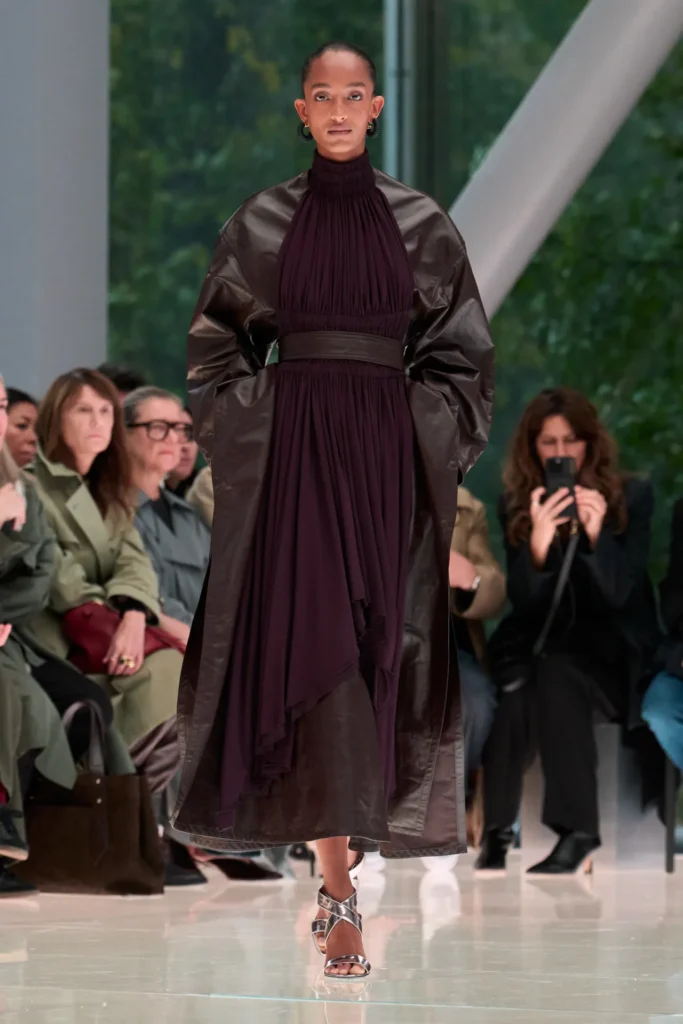
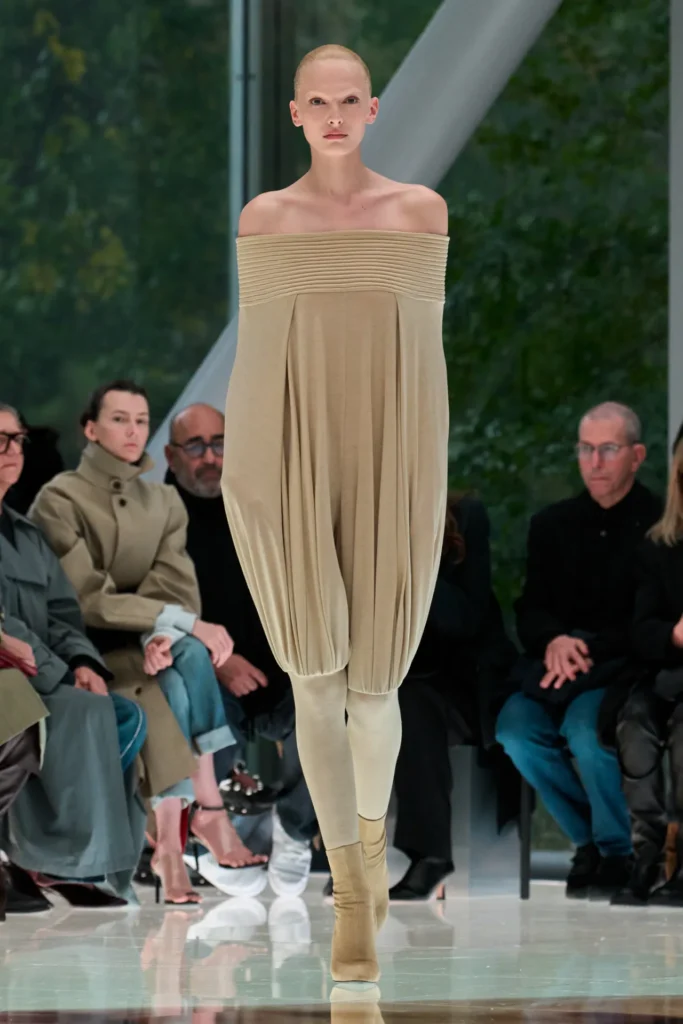
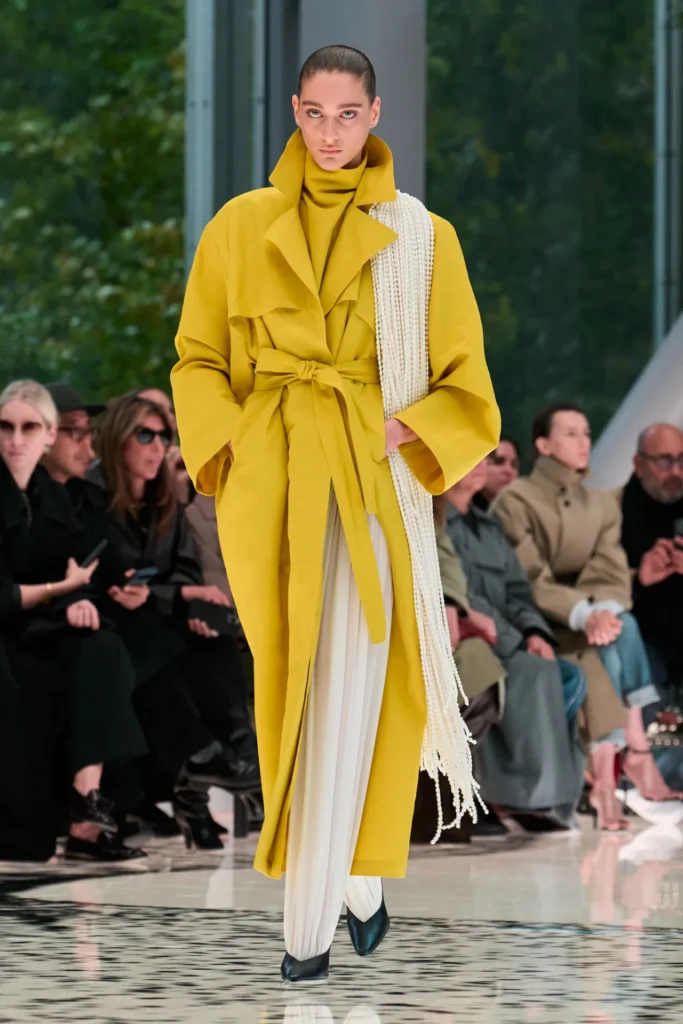
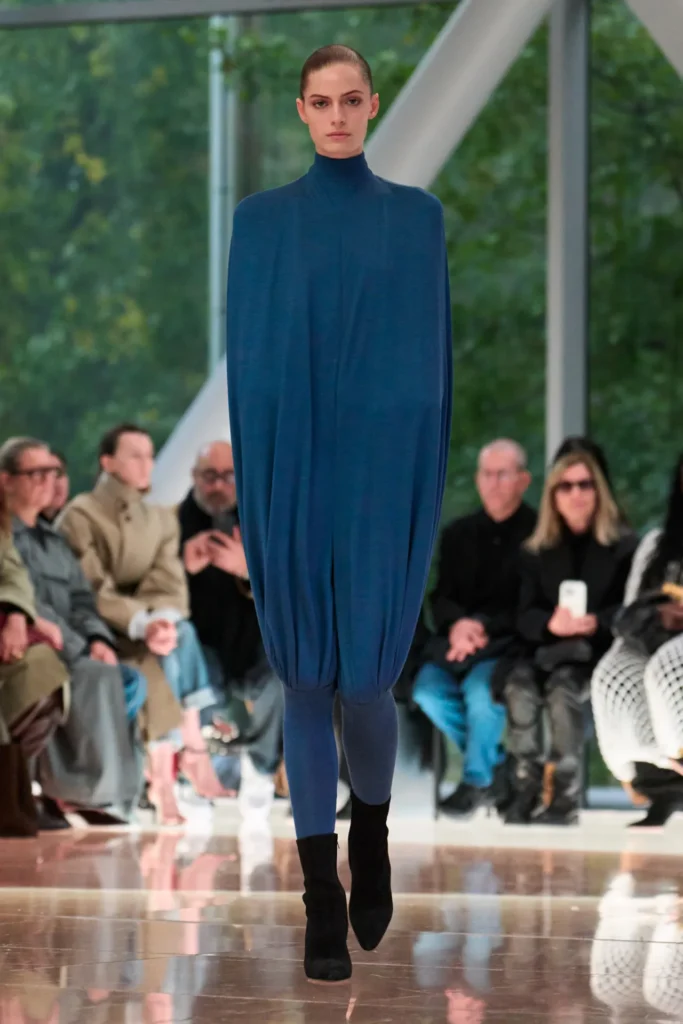
Each piece felt deliberate and mathematical, built from the simplest of geometries: ovals for coats, triangles for tops and skirts, rectangles for tunics and tabards. The entire collection relied on just four noble materials — cotton, python, leather, and silk — and was decorated only by touch: tassels, fringes, and meticulous pleating replacing any trace of ornament.
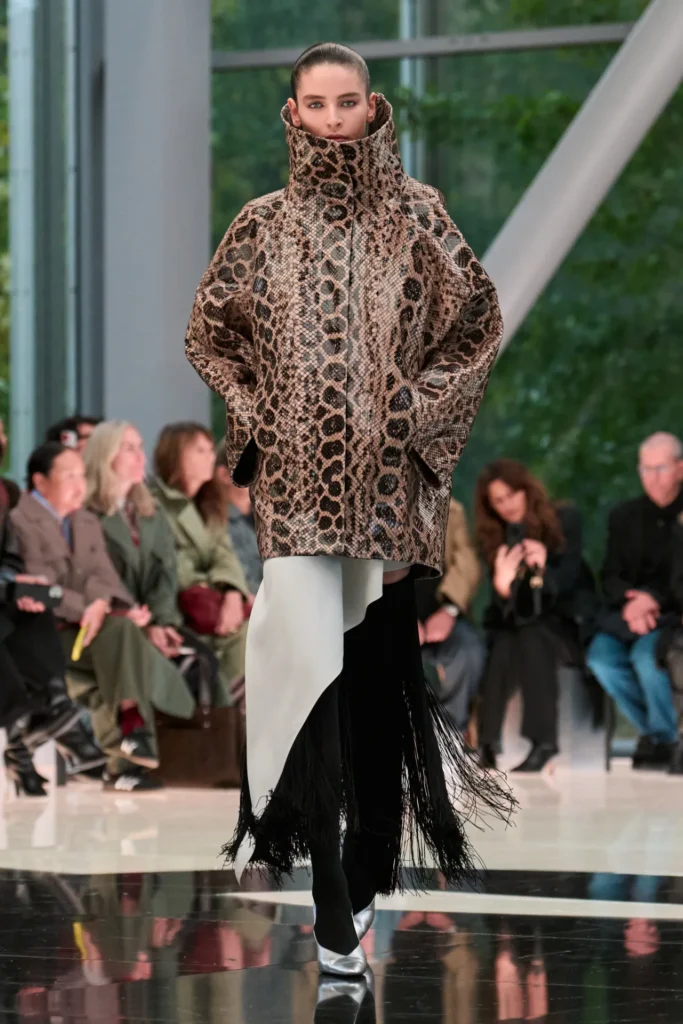
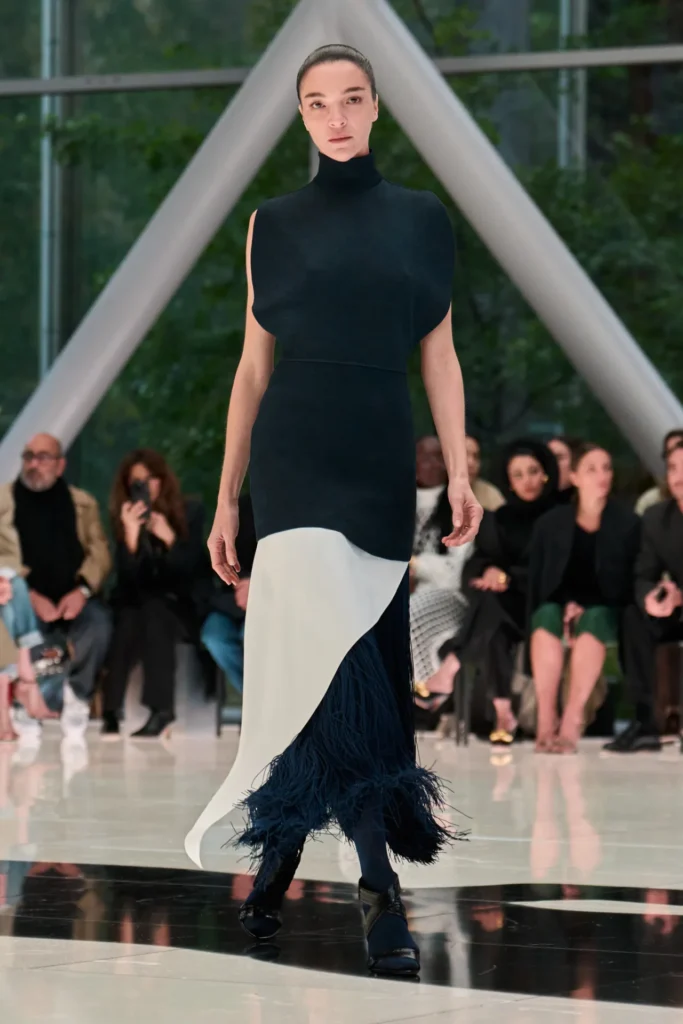
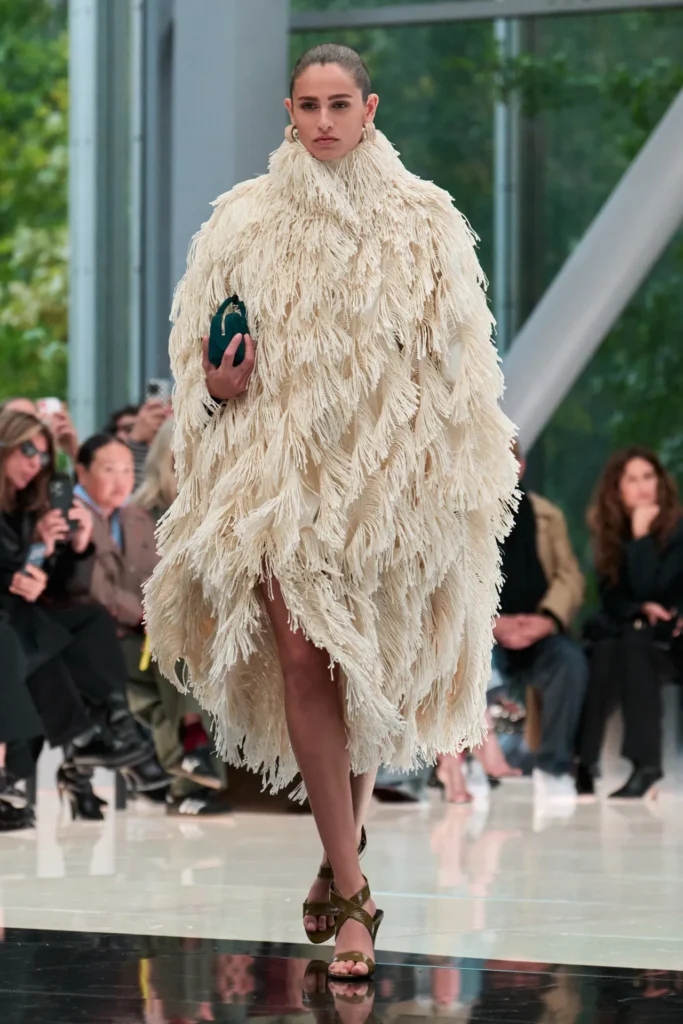
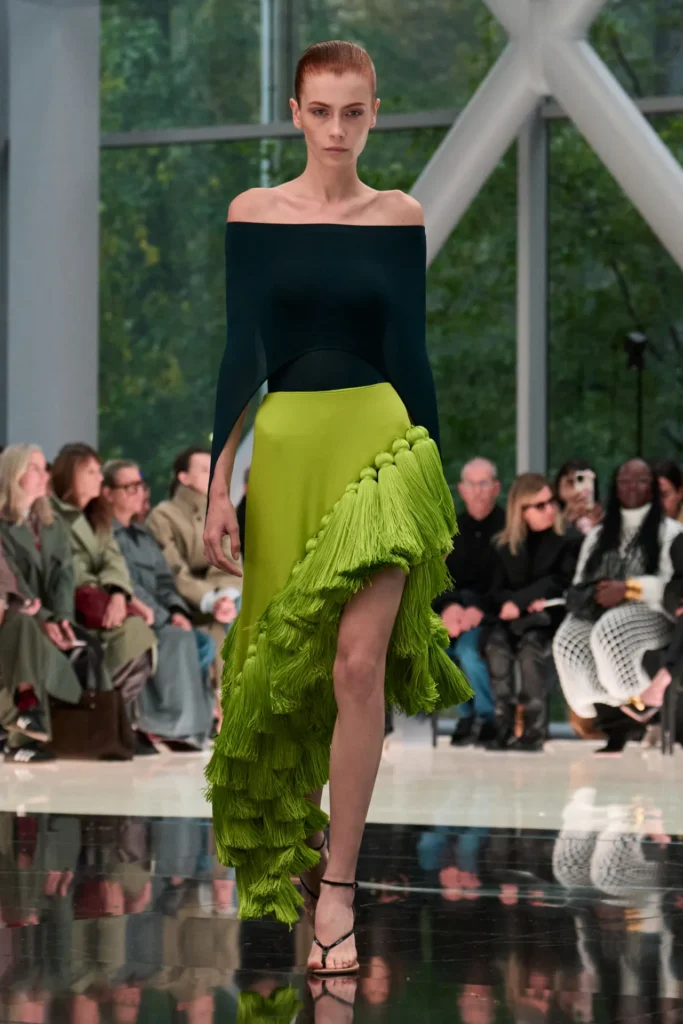
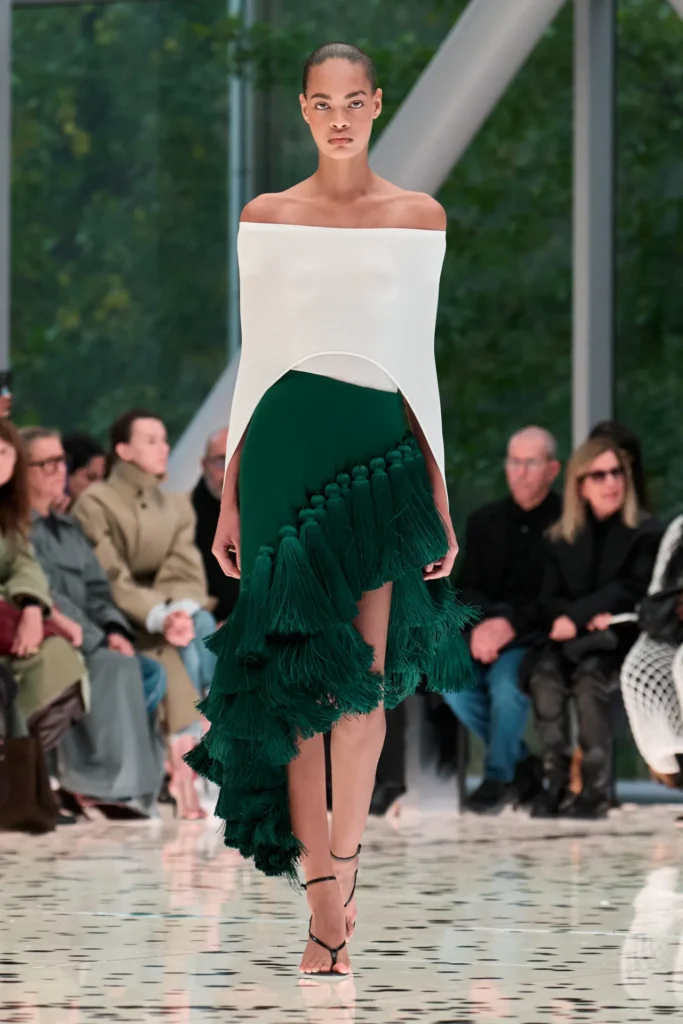
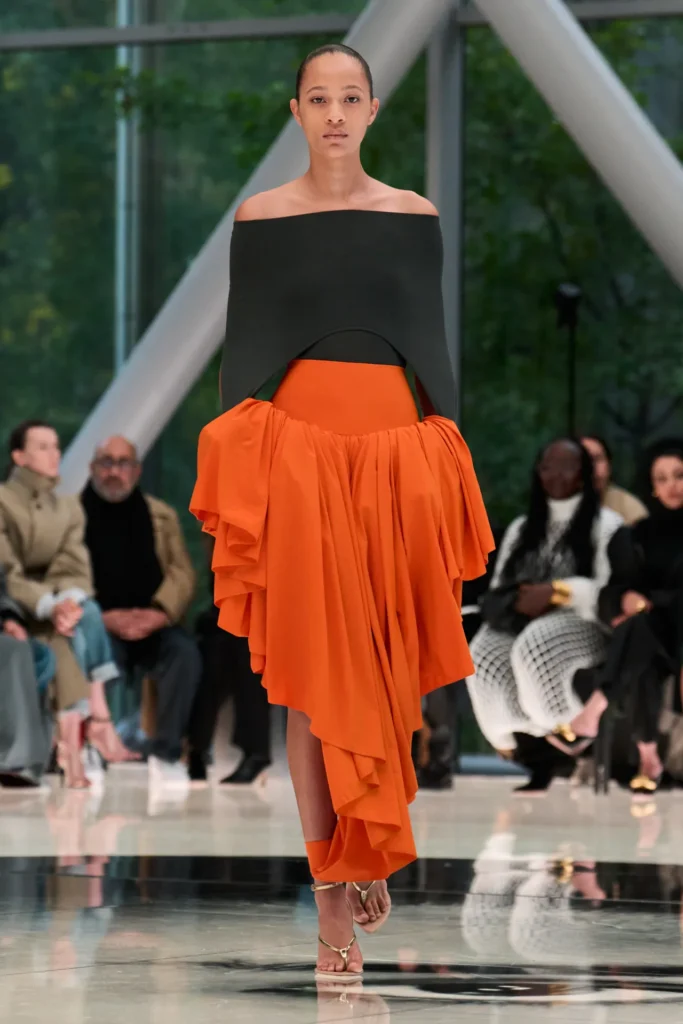
Though the silhouettes enveloped the body, desire pulsed beneath the surface. A flash of bare thigh between stockings and tunics, a glimpse of skin framed by the back cutout of a cocoon-like jacket, a pair of tight jeans visible through sheer panels — each gesture whispered rather than shouted. Even the grand gowns that closed the show revealed vulnerability through movement, their air-inflated shapes swaying with quiet drama.
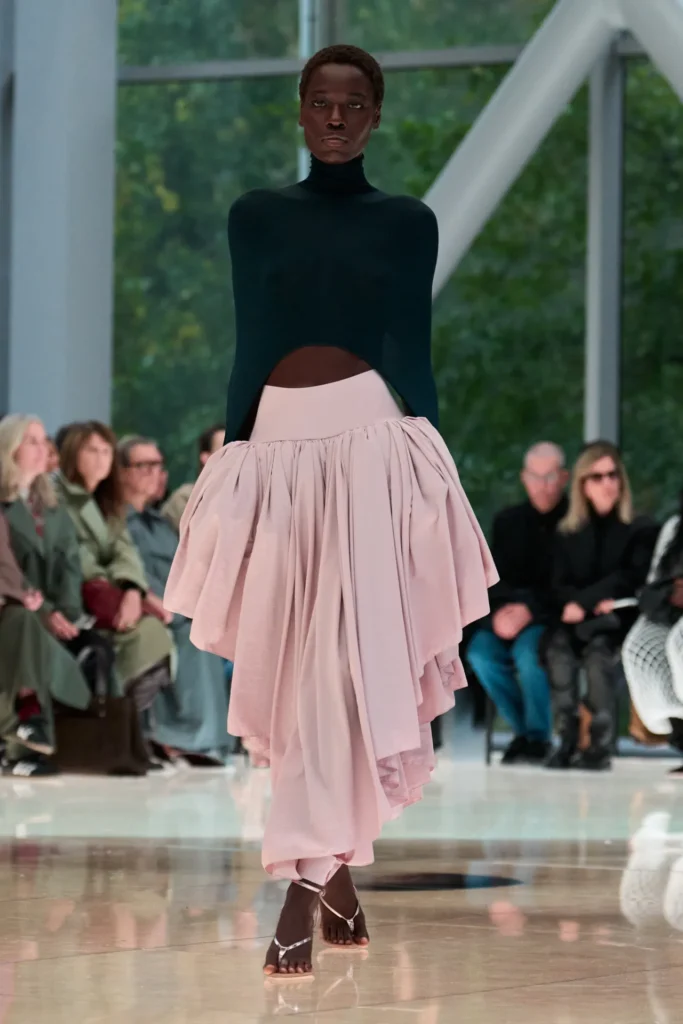
To create those closing looks, Mulier revisited original patterns from Azzedine Alaïa himself. “Everything was cut like balloons, like air — extremely difficult to do,” he explained. “They were majestic, but not theatrical. You could still see the woman inside them.”

